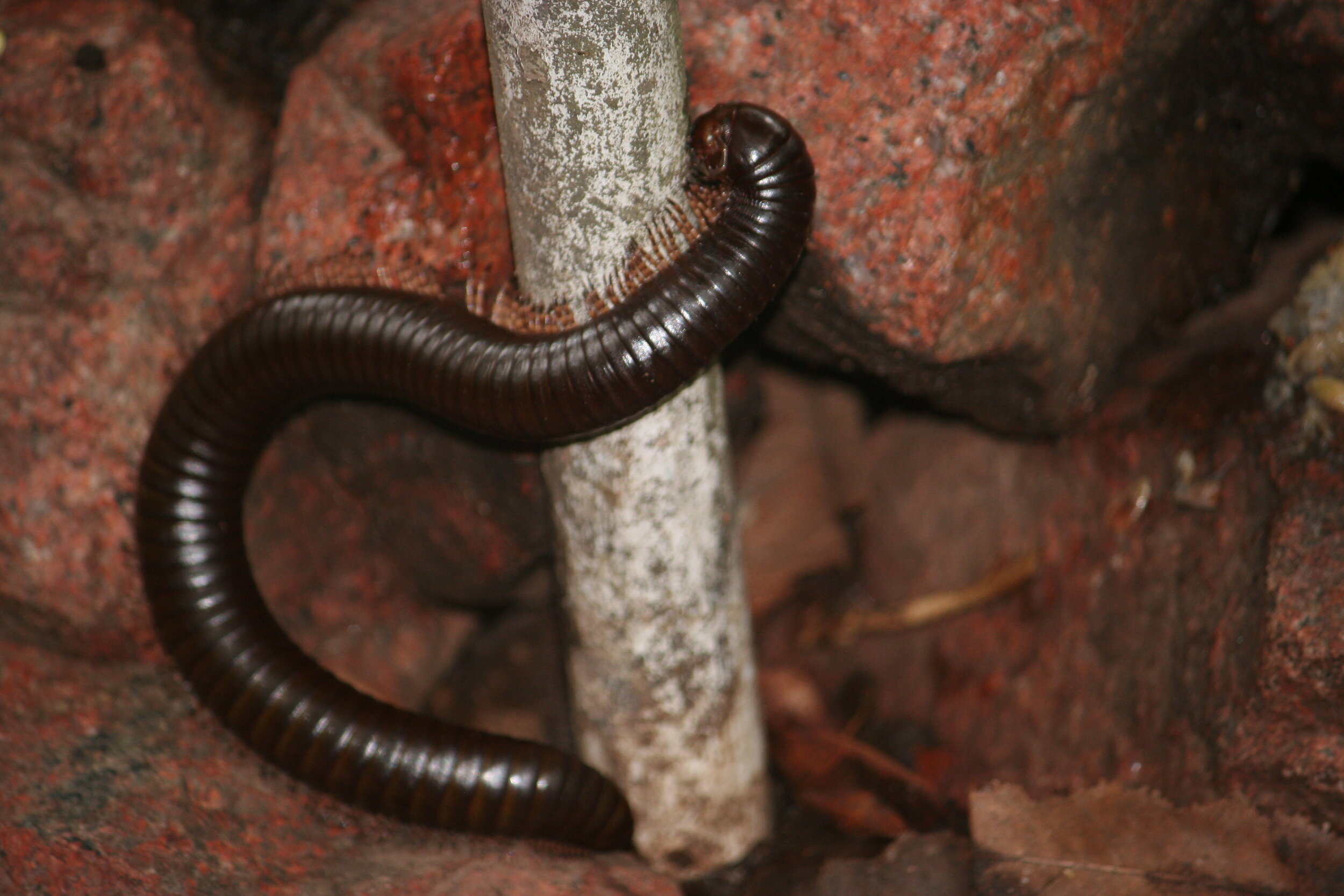Seychelles Giant Millipede
The Seychelles giant millipede was once found on all the islands in the granitic group, but is now confined to islands free from introduced predators, such as Cousine. The giant millipede has two pairs of legs on each body segment and moves relatively slowly.
Unlike a centipede, which is much quicker and has one pair of legs per segment, not to mention a painful bite, the giant millipede is a harmless vegetarian that relies on an irritating chemical defence to protect it from predators.
Although small in size, giant millipedes play one of the most important roles on the island. Not only are they a food source to many animals found here, but they also contribute significantly to ecosystem functioning by breaking down plant litter through their feeding behaviour.
Ultimately millipedes influence the rate of organic matter decomposition, which in turn is extremely important for soil fertility for all other plant and animal species. So the next time you see a Seychelles giant millipede, remember even the smallest of animals are huge for conservation! Although many invertebrates are small and unassuming, they are busy maintaining the fabric of the environment around us.

